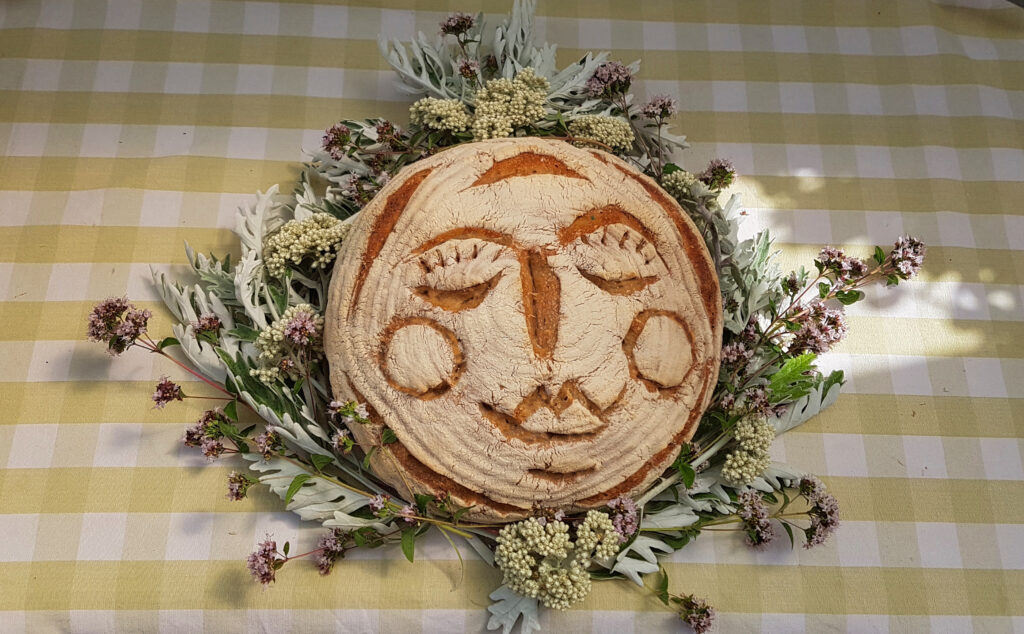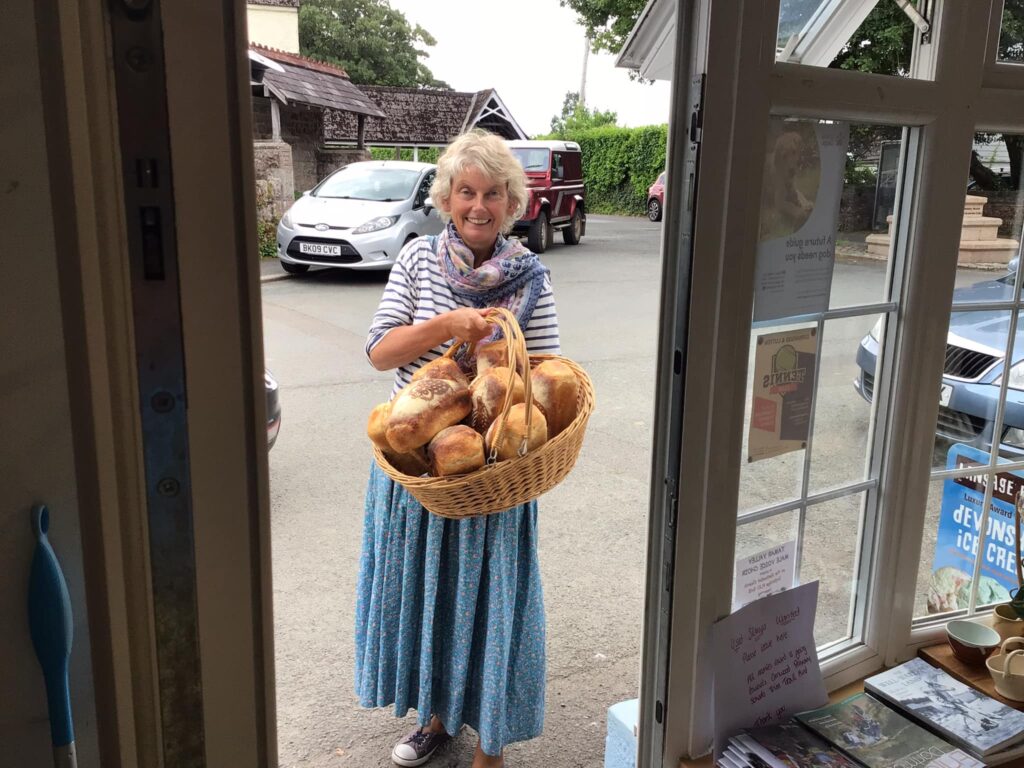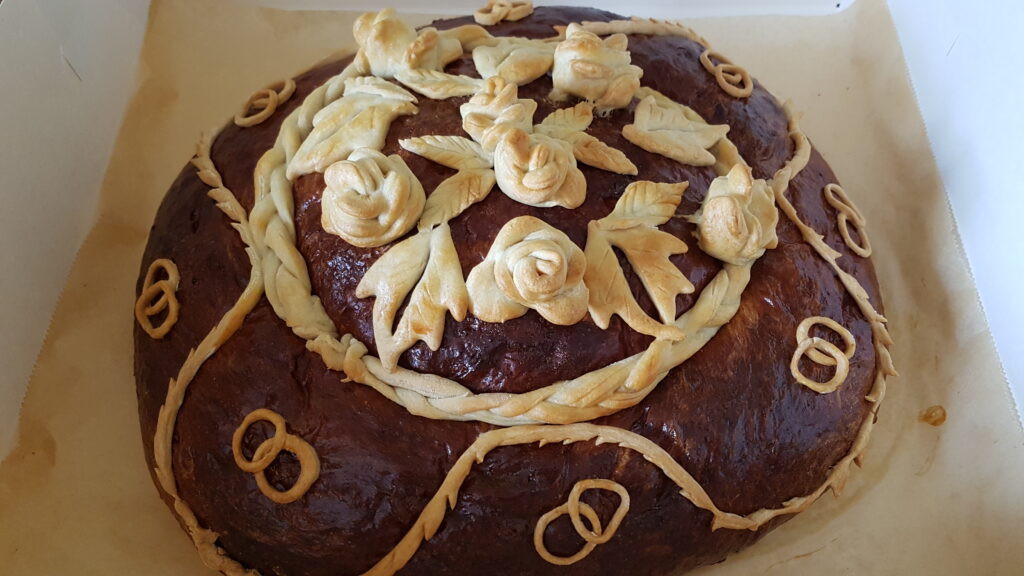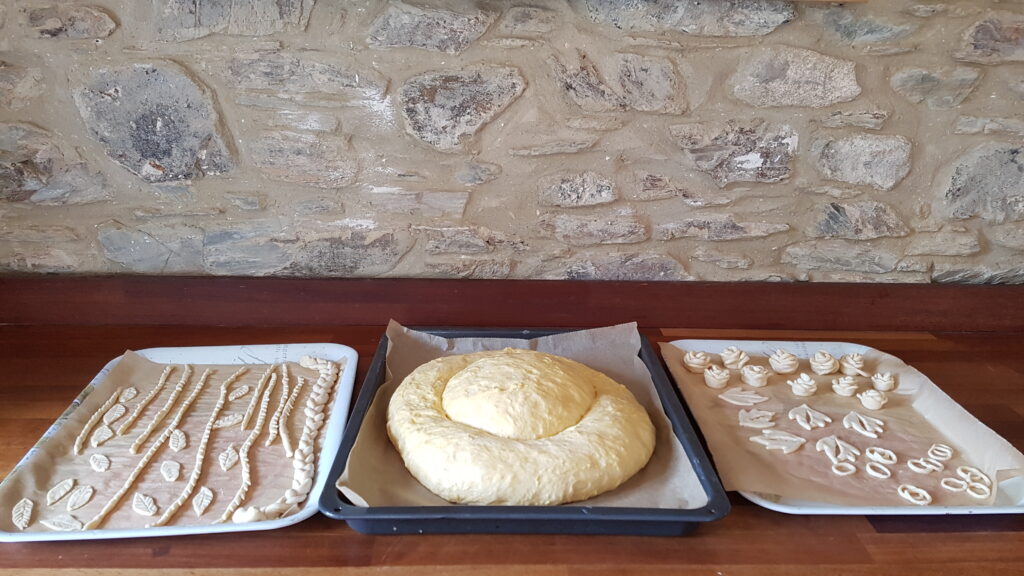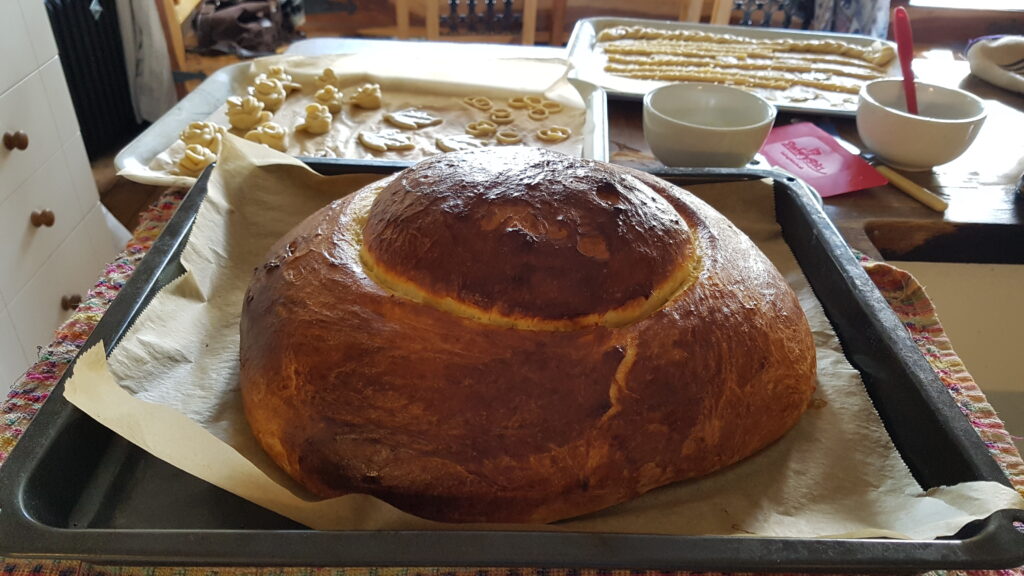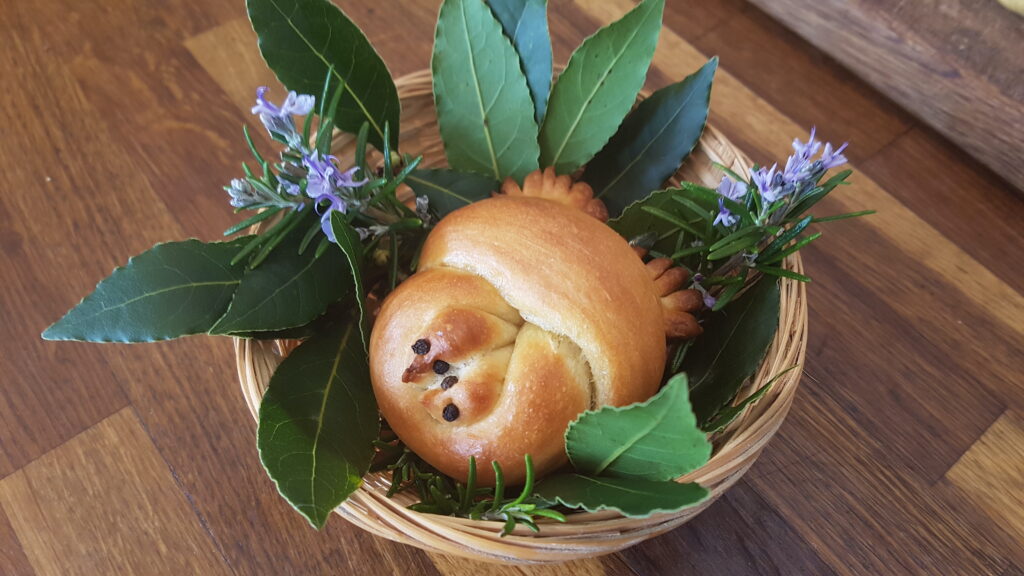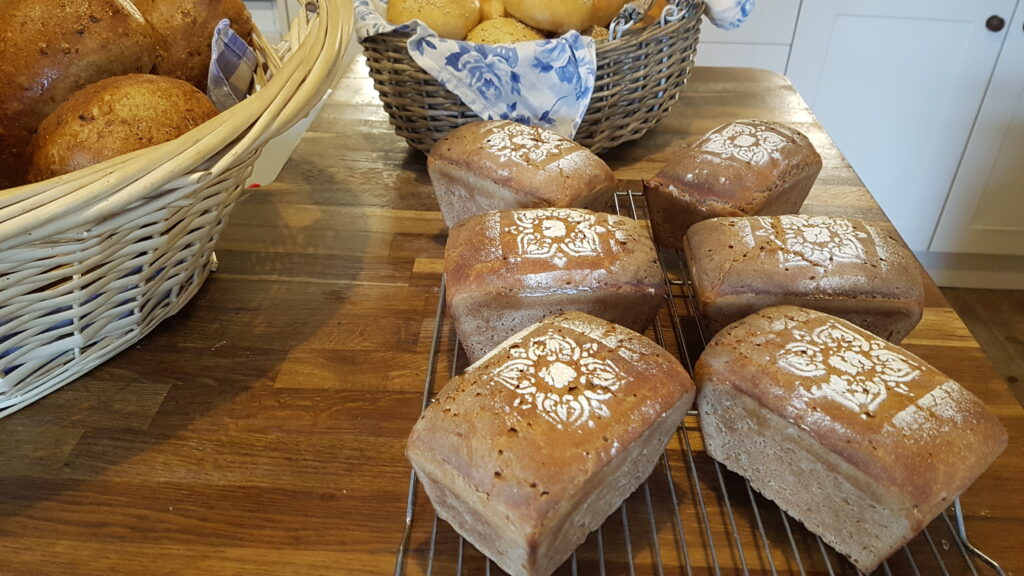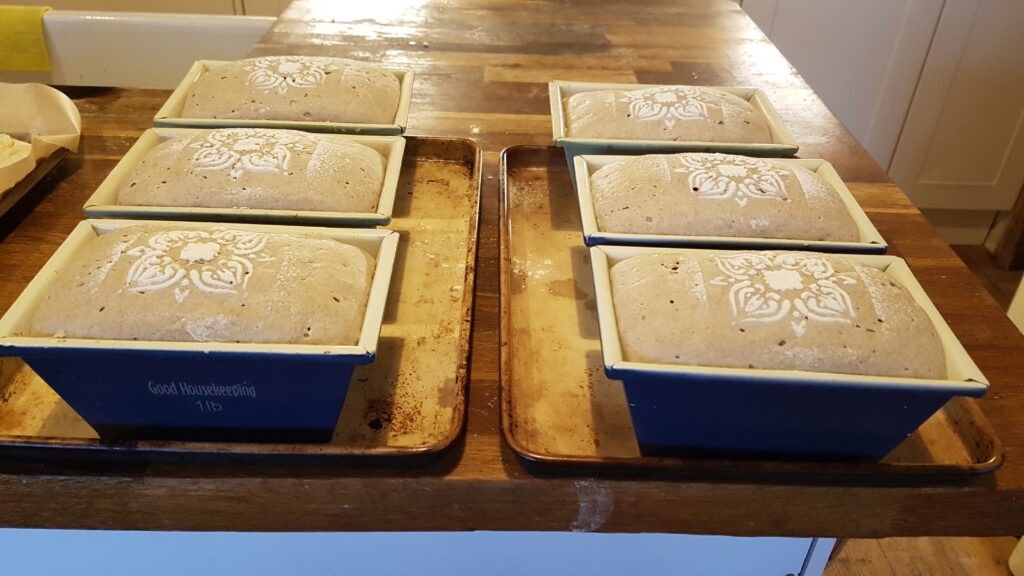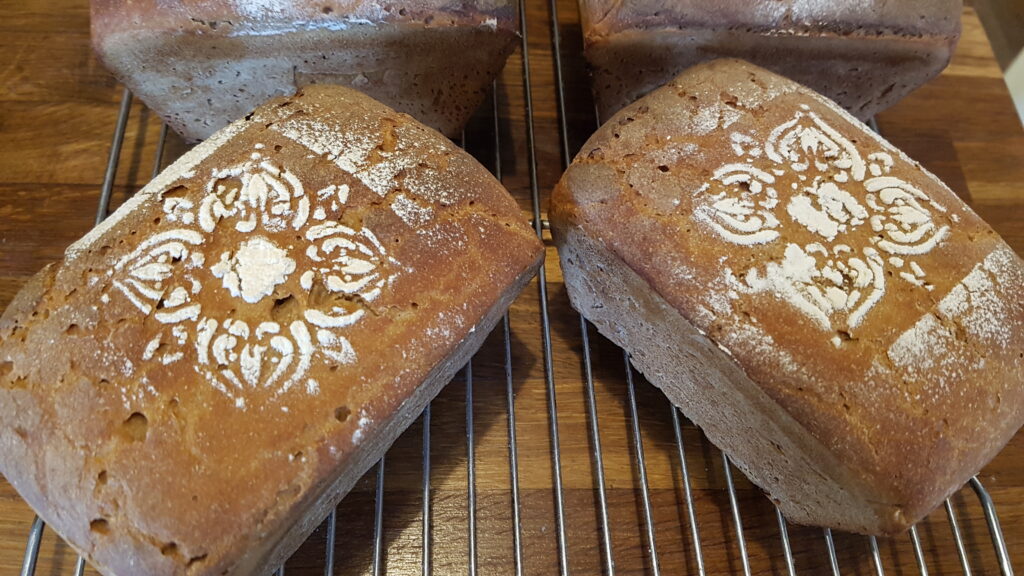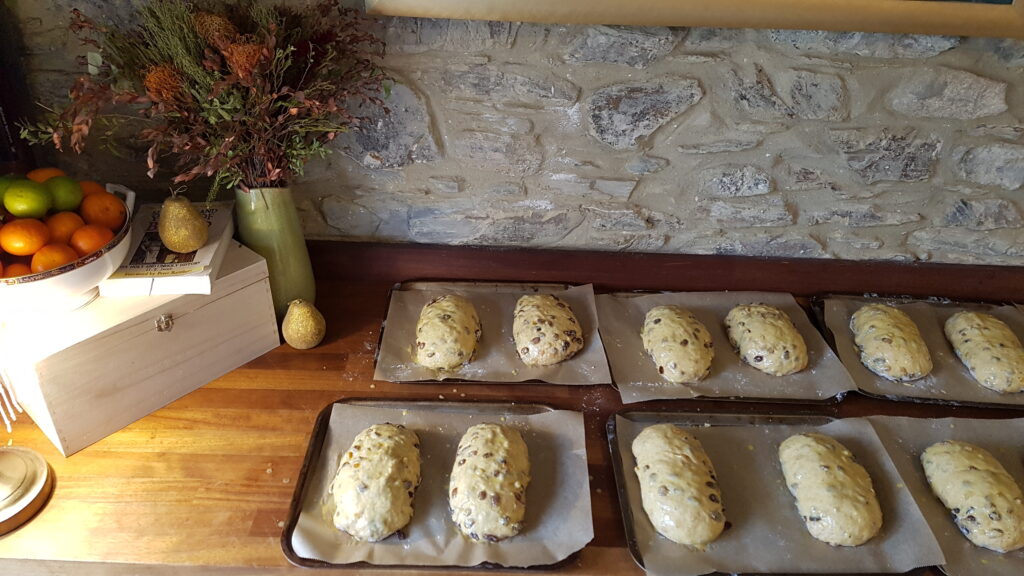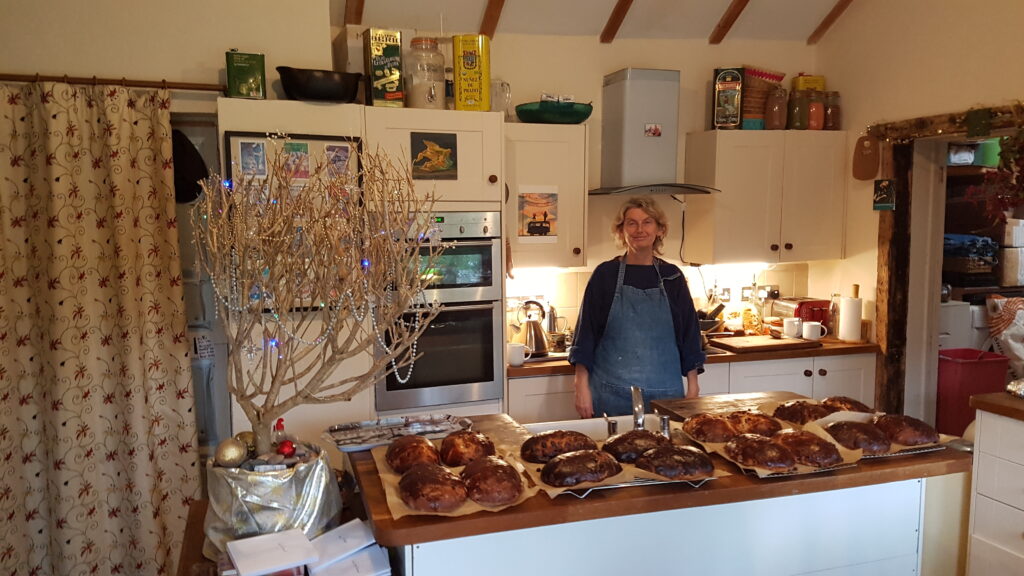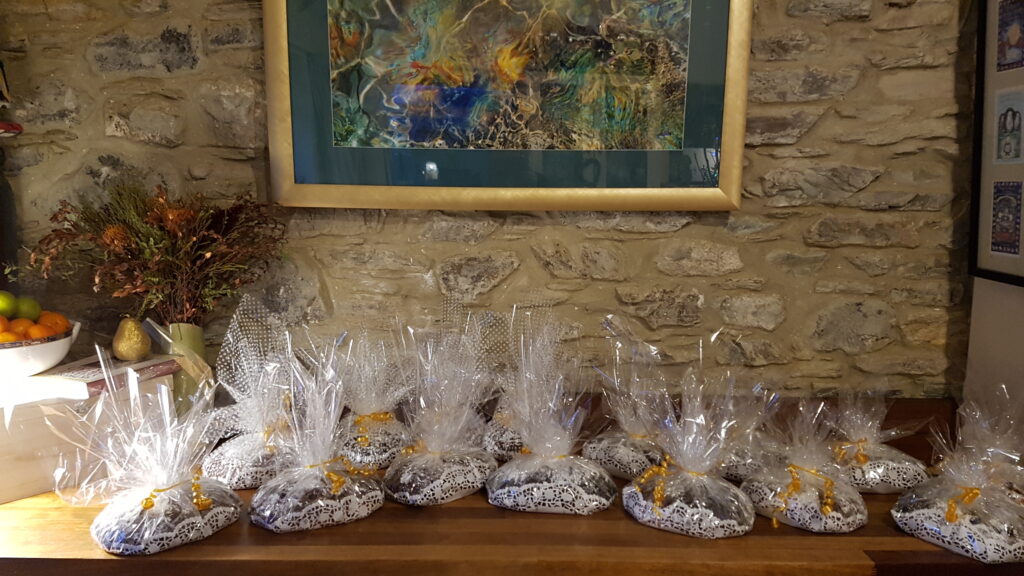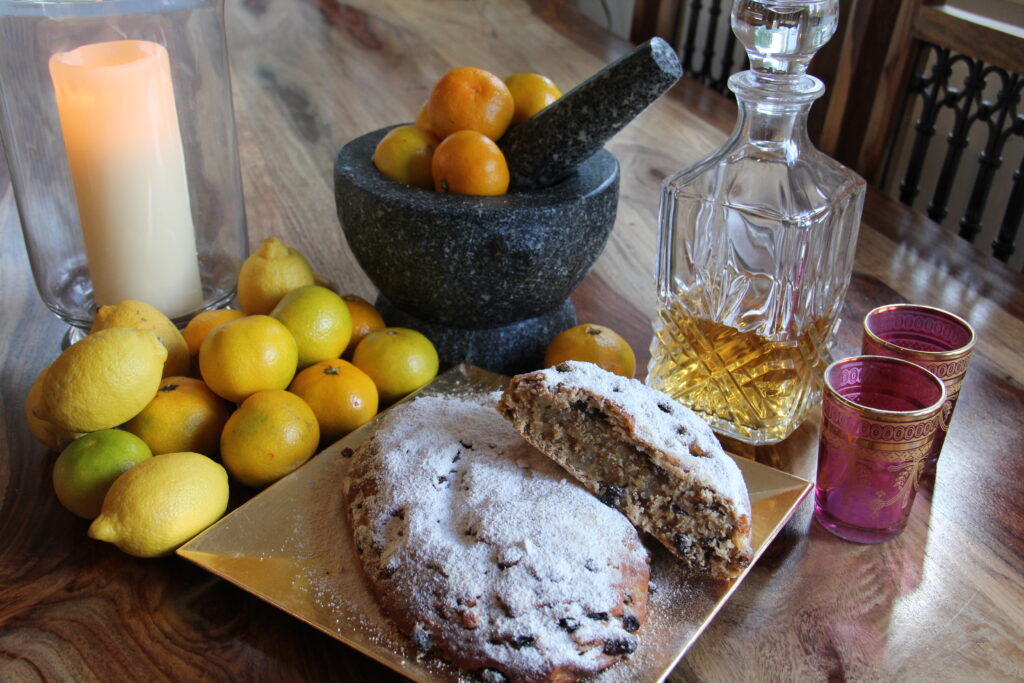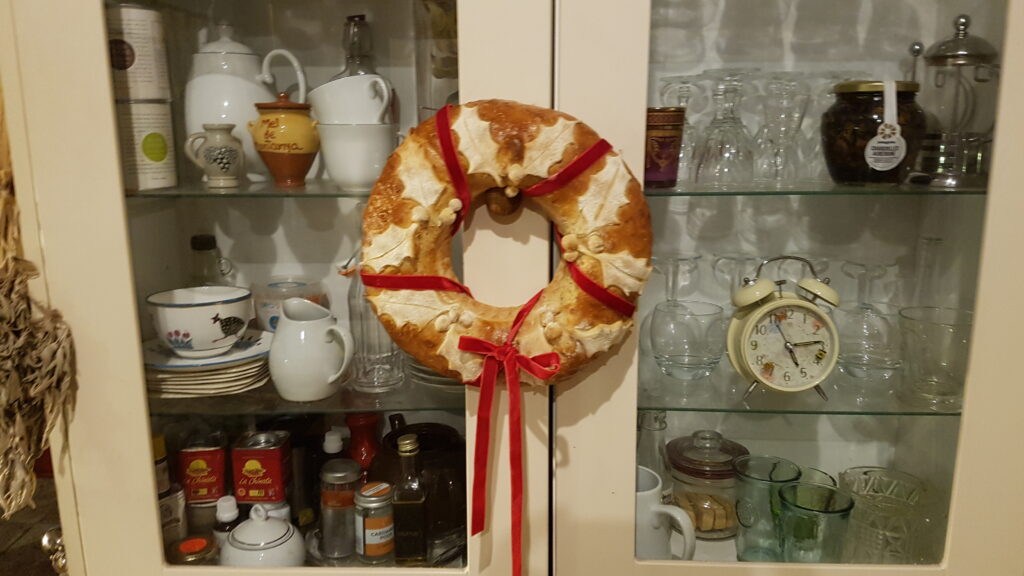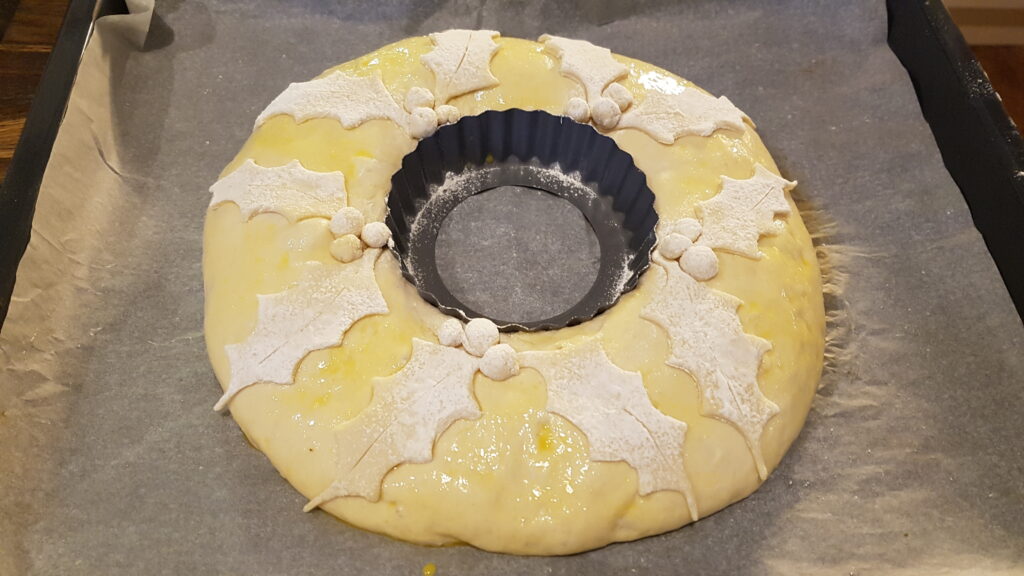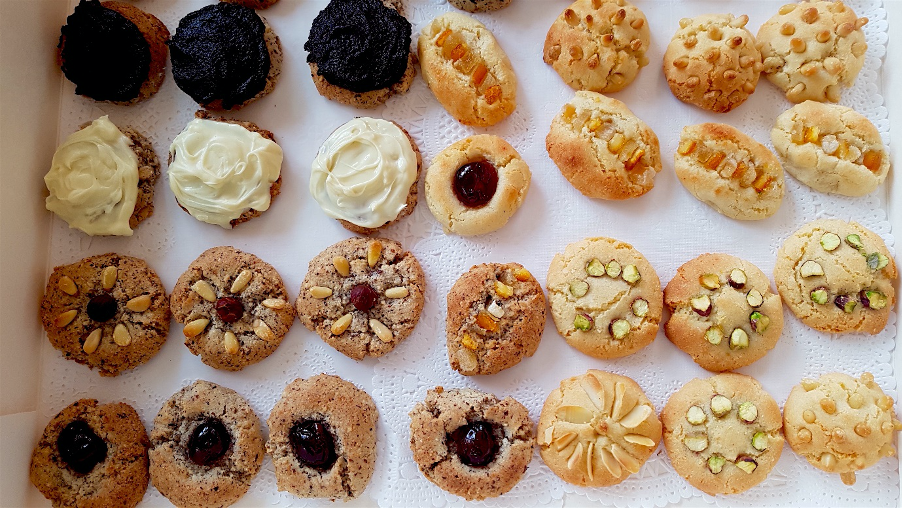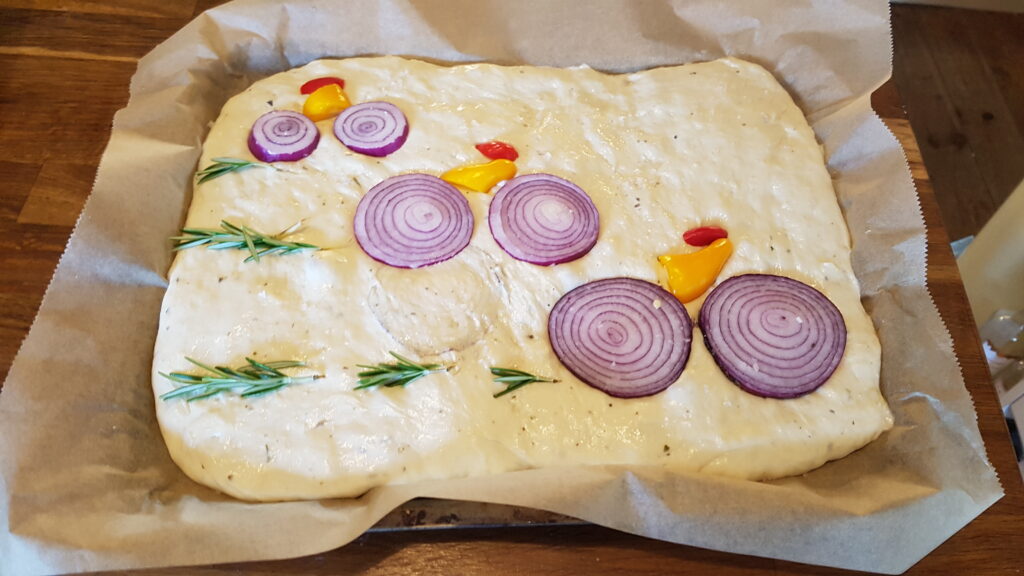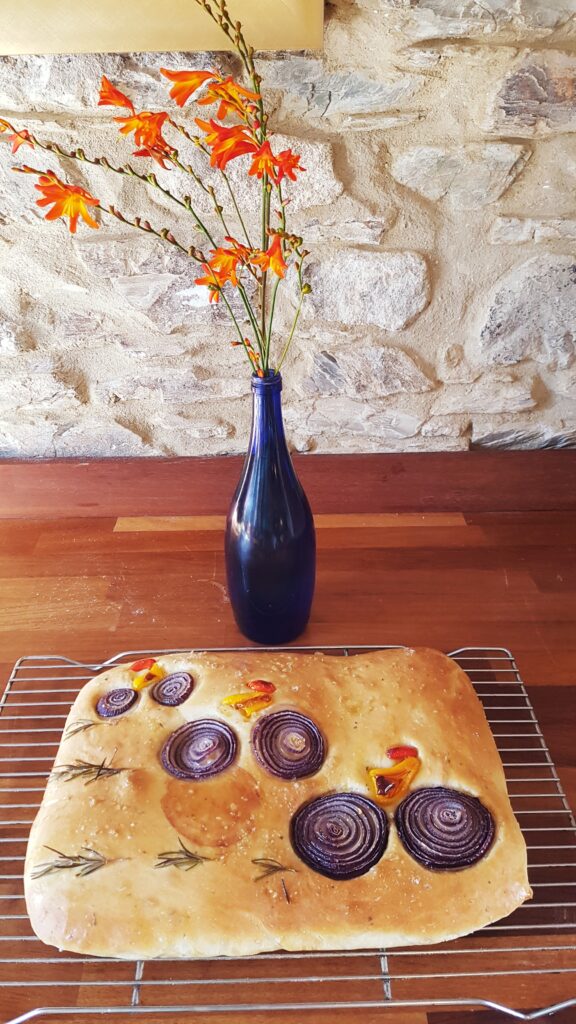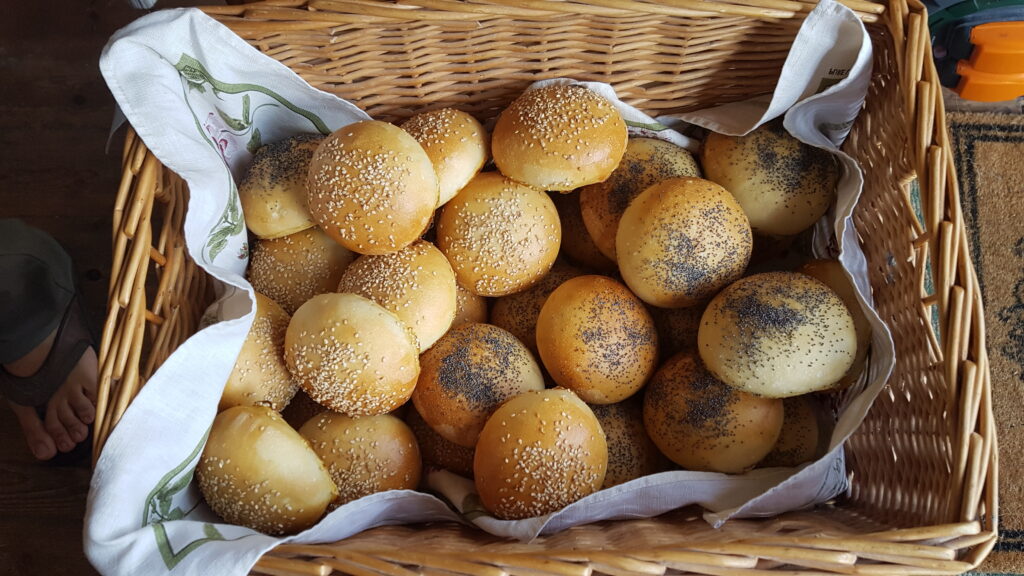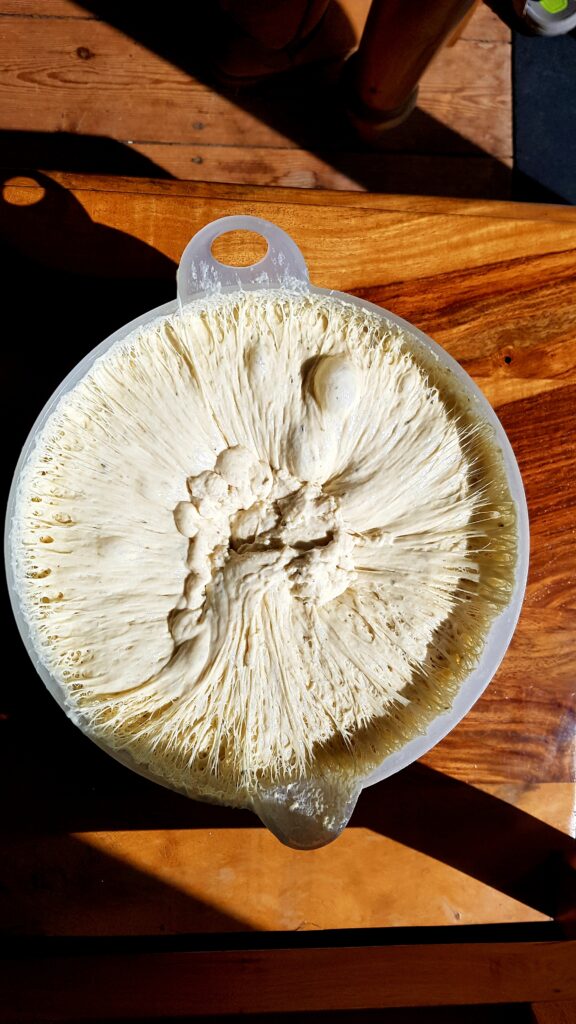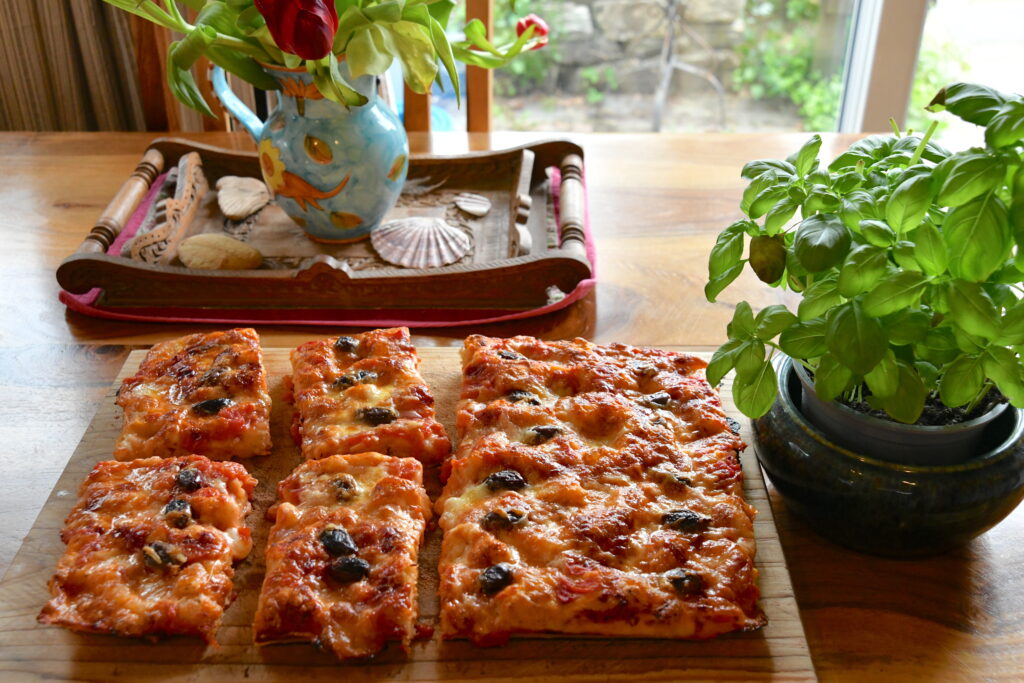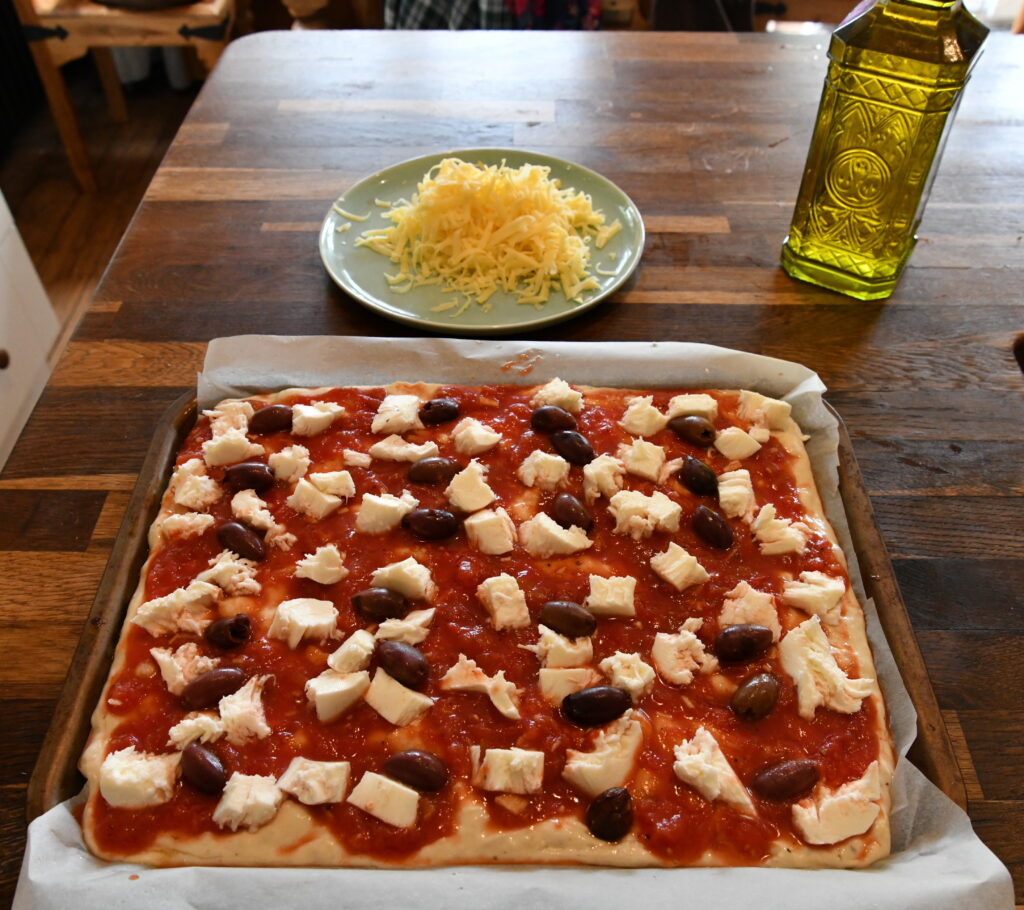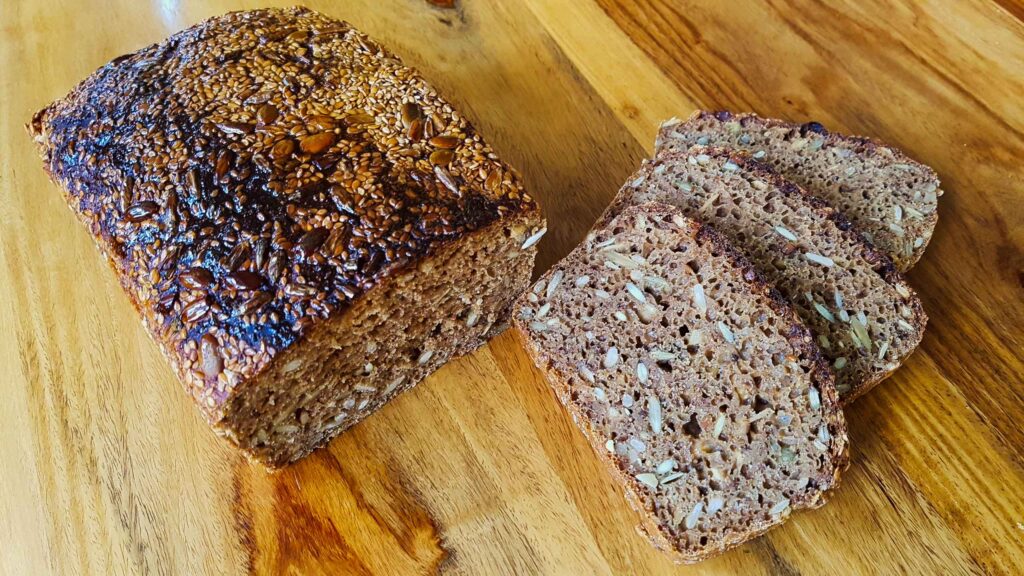A recipe for more delicious self-expression!

There’s a fine line between edible beauty and culinary kitsch. And we all draw our lines in different places. Personally, I feel that bread should look like bread. I love a well-made loaf that shows the individual baker really cared, or was even a bit inspired, but the freakish confections of crust, those bread showpieces baked to look like other things – bird cages, motor cars, swans, bears etc. – leave me curiously unhungry.
Still, I love playing in the bakery. So to keep myself amused in this week’s swelter, I made a couple of simple sourdough loaves and decorated them as the Green Man and his Queen, using foliage and flowers from the garden. Easy to copy, and a showstopper centrepiece for your table, indoors or out.
Ingredients
- 400g ripe white leaven
- 800g Shipton Mill’s organic white no.4
- 400g Shipton Mill’s organic Emmer wheat
- 24g sea salt
- 730g filtered water
Method
- Combine water and leaven in large bowl.
- Add flours and salt.
- Mix into a sticky dough and knead (20 rock & rolls, if you follow our method) until smooth.
- Cover and ferment at room temperature for 3 hours, folding twice.
- At this point, you can shape and prove the loaves, or refrigerate the bowl of dough, as I did, until you’re ready next day.
- Divide the dough in half and shape each half into a boule. Set in well-floured bannetons to rise.
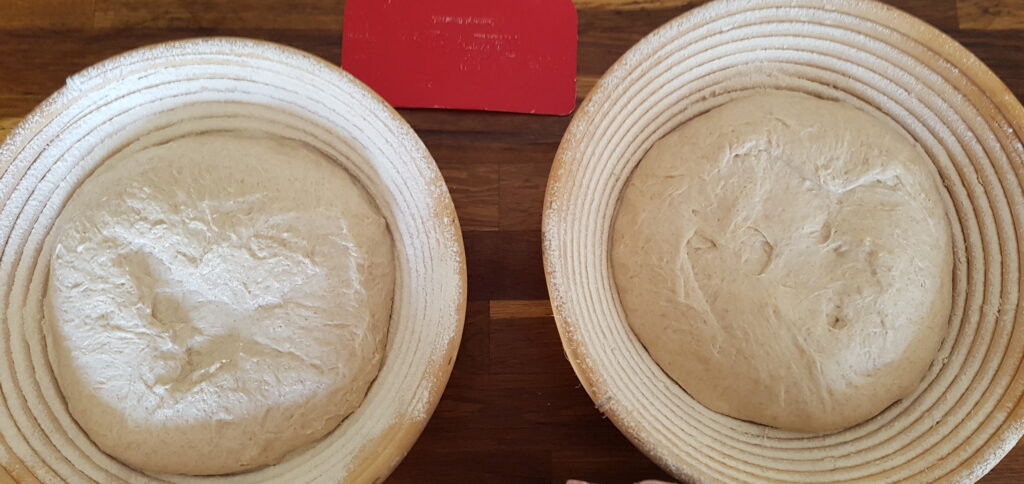
- While the loaves are proving, sketch your ideas for two faces on a scrap of paper. Be bold and simplify the lines as much as possible.
- Pre-heat your oven to 240 C. You will get even better results if you use the Dutch oven method, but it was just a tad too hot yesterday for me to feel like wrestling with a cast iron pot!
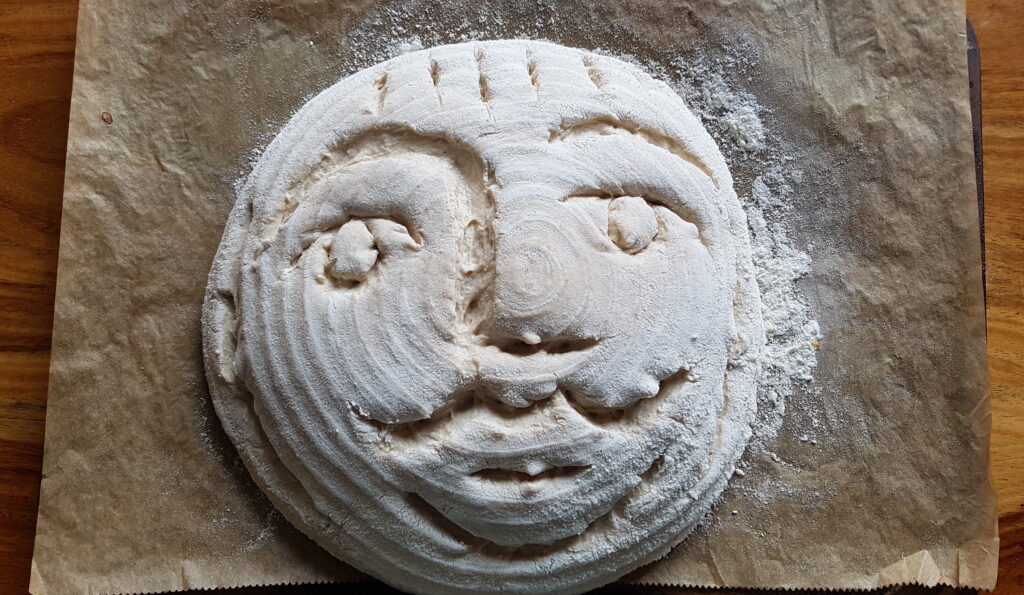
- Turn the first loaf out onto a paper lined tray and brush as much excess flour off as you can, to minimise stripes. Using a very sharp blade, carve a face. Slide the loaf into the oven.
- Repeat with the second loaf.
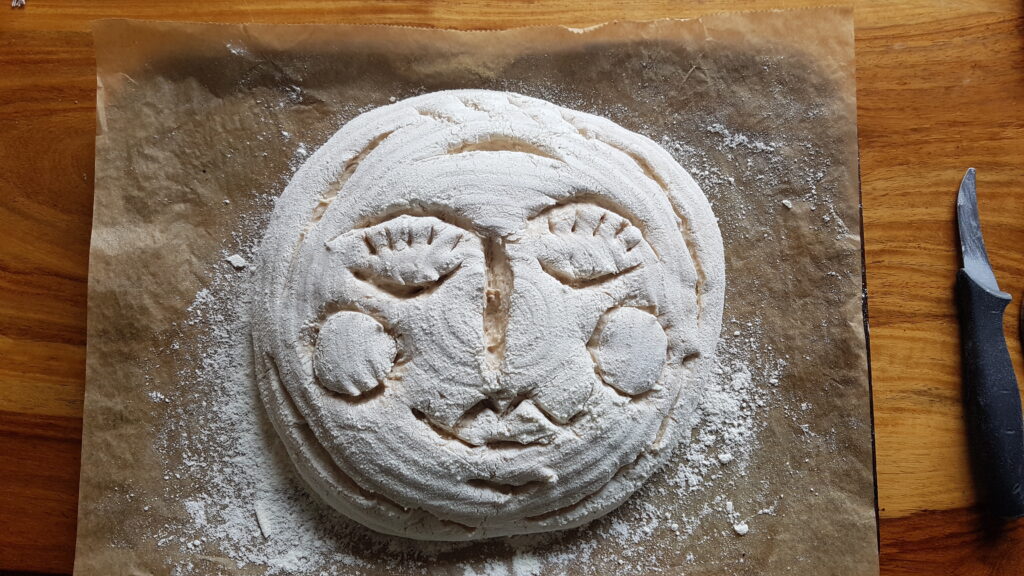
- Bake for 25 minutes, turning temperature down to 210 C after first 10 minutes and allowing 5 minutes extra for second loaf.
- Allow to cool on rack before decorating.
